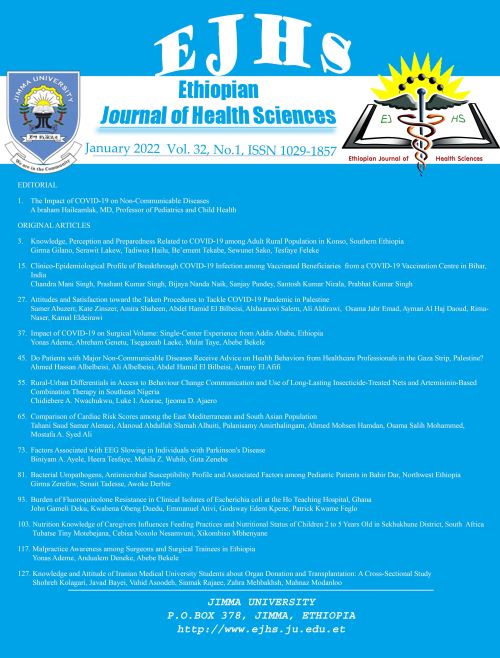Main Article Content
Factors Associated with EEG Slowing in Individuals with Parkinson's Disease
Abstract
BACKGROUND: A plethora of scientific studies has shown diffuse slowing on electroencephalograph (EEG) study is a frequent occurrence in Parkinson’s disease (PD) patients, compared to the healthy controls. Little is known about EEG slowing and PD in the sub-Saharan Africa, especially in Ethiopia. The objective of this study was to assess factors associated with EEG slowing in individuals with Parkinson’s disease.
METHOD: A cross-sectional observational study was conducted in 40 PD patients at Yehuleshet Specialty Clinic, Addis Ababa, Ethiopia. Both descriptive and analytical statistics were used to analyze the data.
RESULTS: Total of 40 patients with PD was included in the present survey. The median age was 66 (IQR: 52.5 – 72.5 years) and young onset PD accounted 20%. Males accounted for two-third of the participants. Diffuse EEG slowing was observed in 52.5% (n=21) of participants. Majority (85%) were on levodopa treatment. Hypovitaminosis D was observed in 93.1% of the study participants. White matter hyperintensity (WMH) and global brain atrophy were seen in 47.5% and 27.5% respectively. Even though statistically not significant, PD patients with EEG slowing, reported more forgetfulness and had WMH on their brain MRI, compared to those with normal EEG. Age was associated with diffuse EEG slowing when adjusted for forgetfulness and WMH (Adjusted OR 1.18 95% CI (1.01 - 1.37) p=0.03).
CONCLUSION: The present study indicates high prevalence of diffuse EEG slowing in PD patients. Age was associated with diffuse EEG slowing. Higher proportion of patients with EEG slowing reported forgetfulness and hypovitaminosis D compared to those with normal EEG recordings.






